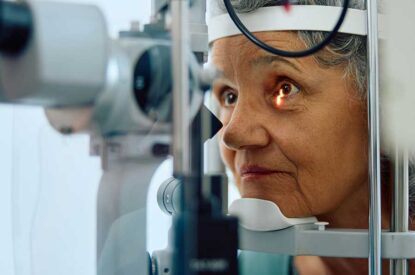Open-Angle Glaucoma
What is Primary Open-Angle Glaucoma?
Primary Open-Angle Glaucoma (POAG) is the most common form of glaucoma, affecting about three million Americans. It happens when the eye’s drainage canals become clogged over time.
The inner eye pressure (also called intraocular pressure or IOP) rises because the correct amount of fluid can’t drain out of the eye. With open-angle glaucoma, the entrances to the drainage canals are clear and should be working correctly. The clogging problem occurs further inside the drainage canals, similar to a clogged pipe below the drain in a sink.
Most people have no symptoms and no early warning signs. If open-angle glaucoma is not diagnosed and treated, it can cause a gradual loss of vision. This type of glaucoma develops slowly and sometimes without noticeable sight loss for many years. It usually responds well to medication, especially if caught early and treated.
Video: Learn About Open-Angle Glaucoma
With regular eye exams, Open-Angle Glaucoma may be detected early and usually responds well to treatment to preserve vision.
Learn More


